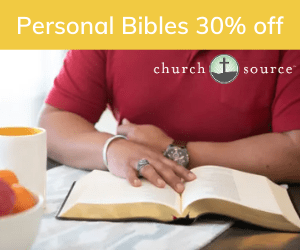
Is the NASB Adventure Bible a good Bible for kids?
As a mom, finding appropriate Bibles for my kiddo is really important. Each age group and reading level requires something different, and different kids are engaged with the Bible in unique ways. The NASB Adventure Bible is a fantastic Bible for helping answer the many questions kids have about the Bible and for inspiring a genuine interest to learn about scripture.
- NASB Translation
- Features and Layout of NASB Adventure Bible
- NASB Adventure Bible Extras
- In the Back
- Do I recommend the NASB Adventure Bible?
I’d say it is great for elementary to middle-school-aged kids, depending on the reading level of your kiddos and I want to highlight a few specific points about this Bible that may help others determine whether this may be the right Bible for the kids in their lives.
I received a complimentary copy of the NASB Adventure Bible as a member of the Bible Gateway Blogger Grid in exchange for an honest review of this Bible. You can find even more information about this Bible here, and I'd love for you to check out the Bible for sale here. #BibleGatewayPartner
NASB Translation
I have taken some time to read through a lot of the material and dive into the offerings, layout, and translation. I did a study of the NASB translation a while back and it is said to be one of the “most literal” translations of the Bible in modern English. The NASB was updated in 2020, and it is important to note that this NASB Adventure Bible is in the 1995 version of the translation.
I think translation is one of the most important questions we should explore when choosing a Bible for ourselves as well as our kids. The 1995 NASB seems easy for kids to read and understand, making it a more fruitful experience for them when reading the Bible.
Features and Layout of NASB Adventure Bible
I am really impressed with all that this kid’s Bible has to offer. It starts off with an explanation of how your kids will use it which is an immediate encouragement for an endeavor that can feel really intimidating to young Bible readers. It explains to them where to find key items and what they are, such as the page number, book name, chapter, section headers, verse numbers, and footnotes. For any new Bible reader, this can be incredibly helpful!

The very next page is a “How to know you are a Christian” page. I love this! This is such a wonderful explanation that is written at a level children will be able to easily grasp. Considering who this Bible is for it is perfectly simple yet concise. Its inclusion of Bible verses to explain and back up each point is stellar and very important. If it is going to explain this vital question I want my kiddo to be directed to the scripture that the point stems from.
Moving on, it includes the typical Contents page with the list of all the books of the Bible and their page numbers, as well as an alphabetized list, and then a section explaining the different special features exclusive to this children’s Bible.

NASB Adventure Bible Extras
One thing I look for in a kid’s Bible is whether they really help break things down at the level my child needs while obviously keeping the Bible itself the focus and adhering to strict accuracy of the Word. This Bible does an excellent job of this balance. The pages are not overtaken by the “extras”, but the whole book is scattered with helpful information to help explain different things at a child’s level of understanding.
The categories of extras include:
- Words of Treasure
- Did You Know?
- Life in Bible Times
- People in Bible Times
- Live It!
- Book Introductions
These break down just as they sound, and are well written and helpful for the kids in our lives to better understand what they are reading and how to apply it to themselves. It also helps teach them the importance of culture in Bible times and different aspects of self-application early on which is fantastic.

The NASB Adventure Bible includes Book Overviews you would expect to find in a lot of Bibles geared toward older readers but in a format that is intriguing to kids. (My own kiddo was REALLY excited about this part. She told me she wished her other Bibles had such great introductions. We’ve since done a couple of overview studies together and she used this Bible).
There are so many incredible resources within the pages of this Bible. It maintains the focus on the Word itself and helping guide kids through the Bible. I am truly pleased with the balance they present. The helpful explanations and articles are not overly worded risking losing kid’s attention.
In the Back
I am thrilled at this children’s Bible inclusion of a topical index and a dictionary concordance in the back! This is truly impressive to have in a children’s Bible and another aspect my kiddo was extremely excited about.
Maps in full-color glossy pages are also included. These can help give your kids an idea of the geography of Bible times.
Do I recommend the NASB Adventure Bible?
Overall I am incredibly impressed with this Bible. I can’t say that enough, to be honest. It feels like a Bible geared for older readers but designed with kids in mind. It can definitely help encourage, inspire and motivate kids to read, understand, and apply scripture early in their lives.
Book overviews, maps, concordance, index, and articles about Bible times and self-application will truly help kids get excited about scripture. This children’s Bible can help your kids grow in their faith and understanding of the Bible earlier in their lives.

As a parent, I definitely highly recommend the NASB Adventure Bible for the kids in your life. Add the NASB Adventure Bible to your gift ideas for kids.
I encourage you to check out more information about this Bible, and grab your own.










